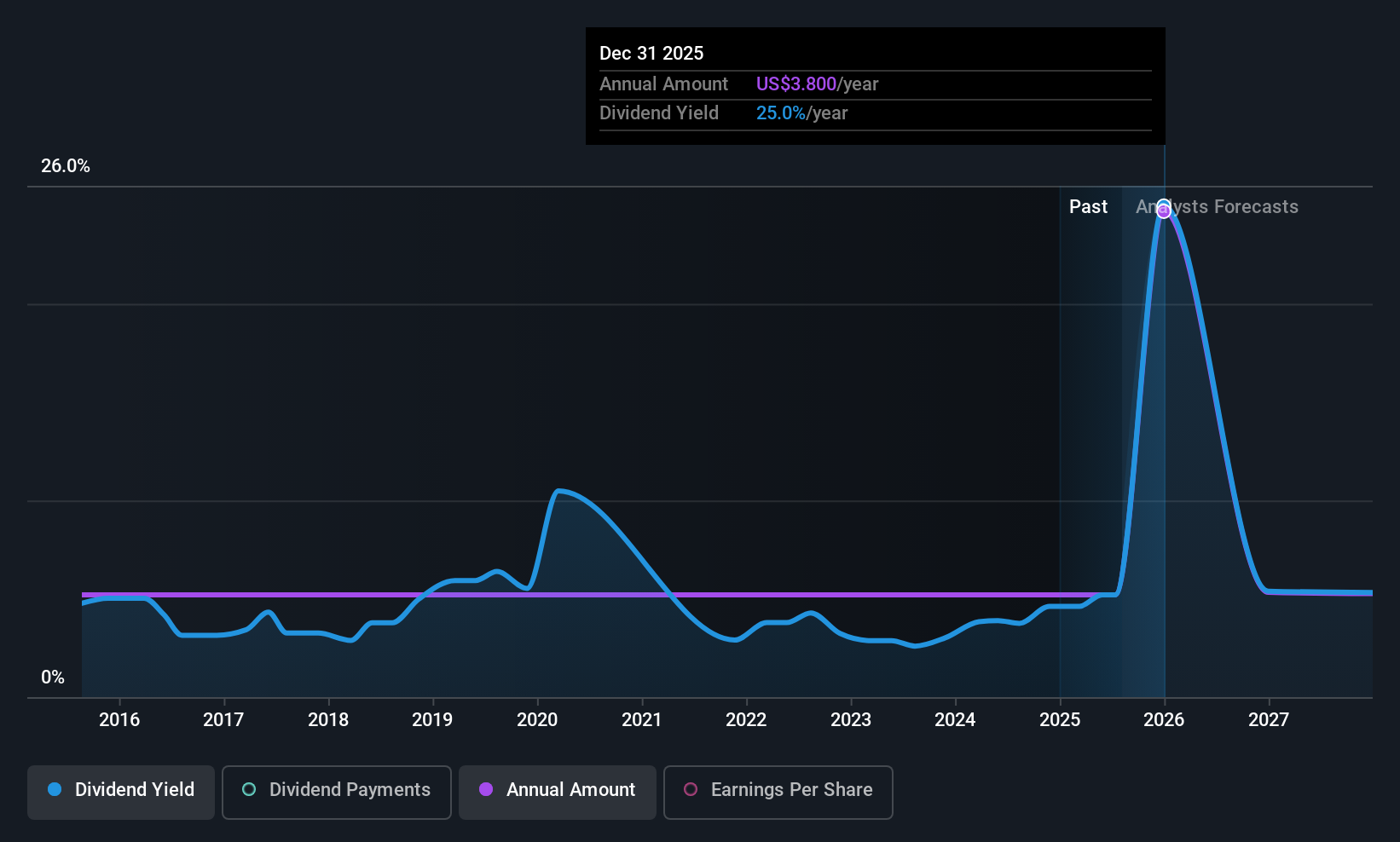
Brightstar Lottery PLC (NYSE:BRSL) is about to trade ex-dividend in the next 3 days. The ex-dividend date is one business day before a company's record date, which is the date on which the company determines which shareholders are entitled to receive a dividend. It is important to be aware of the ex-dividend date because any trade on the stock needs to have been settled on or before the record date. Therefore, if you purchase Brightstar Lottery's shares on or after the 12th of August, you won't be eligible to receive the dividend, when it is paid on the 26th of August.
The company's next dividend payment will be US$0.20 per share, on the back of last year when the company paid a total of US$0.80 to shareholders. Looking at the last 12 months of distributions, Brightstar Lottery has a trailing yield of approximately 5.3% on its current stock price of US$15.22. Dividends are an important source of income to many shareholders, but the health of the business is crucial to maintaining those dividends. That's why we should always check whether the dividend payments appear sustainable, and if the company is growing.
Dividends are usually paid out of company profits, so if a company pays out more than it earned then its dividend is usually at greater risk of being cut. Brightstar Lottery paid a dividend last year despite being unprofitable. This might be a one-off event, but it's not a sustainable state of affairs in the long run. Given that the company reported a loss last year, we now need to see if it generated enough free cash flow to fund the dividend. If cash earnings don't cover the dividend, the company would have to pay dividends out of cash in the bank, or by borrowing money, neither of which is long-term sustainable. The good news is it paid out just 18% of its free cash flow in the last year.
Check out our latest analysis for Brightstar Lottery
Click here to see the company's payout ratio, plus analyst estimates of its future dividends.

Have Earnings And Dividends Been Growing?
Businesses with strong growth prospects usually make the best dividend payers, because it's easier to grow dividends when earnings per share are improving. If earnings decline and the company is forced to cut its dividend, investors could watch the value of their investment go up in smoke. Brightstar Lottery reported a loss last year, but at least the general trend suggests its income has been improving over the past five years. Even so, an unprofitable company whose business does not quickly recover is usually not a good candidate for dividend investors.
Many investors will assess a company's dividend performance by evaluating how much the dividend payments have changed over time. Brightstar Lottery's dividend payments are broadly unchanged compared to where they were 10 years ago.
We update our analysis on Brightstar Lottery every 24 hours, so you can always get the latest insights on its financial health, here.
To Sum It Up
Has Brightstar Lottery got what it takes to maintain its dividend payments? First, it's not great to see the company paying a dividend despite being loss-making over the last year. On the plus side, the dividend was covered by free cash flow." Overall we're not hugely bearish on the stock, but there are likely better dividend investments out there.
So while Brightstar Lottery looks good from a dividend perspective, it's always worthwhile being up to date with the risks involved in this stock. To help with this, we've discovered 1 warning sign for Brightstar Lottery that you should be aware of before investing in their shares.
Generally, we wouldn't recommend just buying the first dividend stock you see. Here's a curated list of interesting stocks that are strong dividend payers.
Have feedback on this article? Concerned about the content? Get in touch with us directly. Alternatively, email editorial-team (at) simplywallst.com.
This article by Simply Wall St is general in nature. We provide commentary based on historical data and analyst forecasts only using an unbiased methodology and our articles are not intended to be financial advice. It does not constitute a recommendation to buy or sell any stock, and does not take account of your objectives, or your financial situation. We aim to bring you long-term focused analysis driven by fundamental data. Note that our analysis may not factor in the latest price-sensitive company announcements or qualitative material. Simply Wall St has no position in any stocks mentioned.